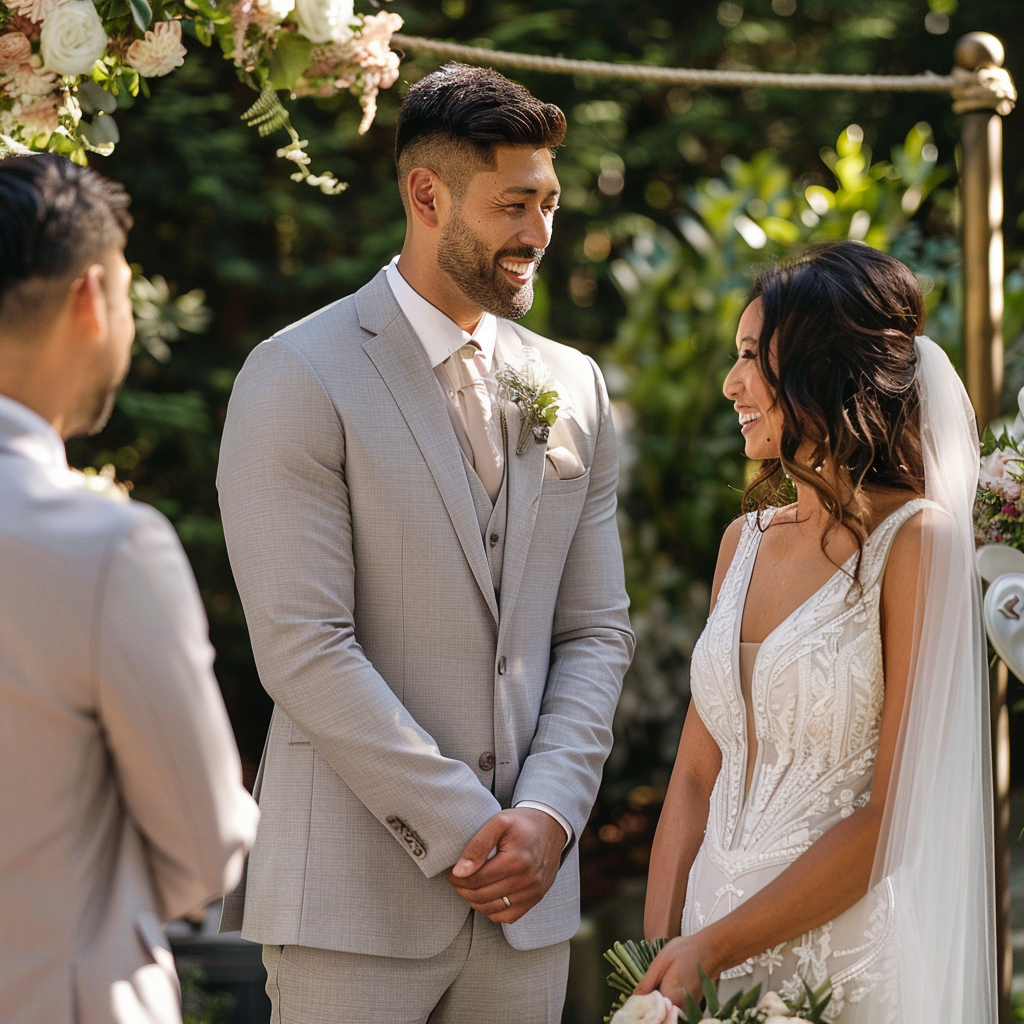Selecting the perfect suit color isn't just about matching your personal taste; it’s about crafting an image that speaks to both your personality and the occasion. Whether you’re preparing for a job interview, heading to a wedding, or updating your wardrobe for the upcoming season, the color of your suit sends a powerful message. Let’s dive into some expert advice on how to choose the right suit color that enhances your style and ensures you stand out for all the right reasons.
Understand Color Basics For Suiting
Before you choose a suit color, it's crucial to understand how different colors can affect perceptions and the message they convey.
Neutral Colors: Safe and Versatile
The following three colors are the most timeless and classic suit colors, often perfect for any occasion.
- Black: The ultimate in formality, black suits are perfect for evening events, funerals, or any occasion where formal attire is required. It’s authoritative and classic, but can be too severe for casual or creative settings.
- Navy: A universally flattering color, navy suits exude confidence without the starkness of black. Ideal for business meetings, interviews, and social events, navy is versatile and less imposing.
- Gray: From light heather gray to dark charcoal, gray suits are excellent for their adaptability. Lighter grays work well in the spring and summer months or in more casual business environments, while darker grays are suitable for serious business meetings and winter gatherings.
Vibrant Colors: Bold and Expressive
- Blue: A brighter blue than navy, this color adds a pop of vibrancy to your wardrobe. Suitable for creative industries or less formal events, a blue suit feels modern and can distinguish you in a crowd.
- Burgundy: Perfect for making a bold statement, burgundy suits are ideal for parties or fashion-forward events. They project confidence and creativity.
- Green: An uncommon choice, green suits range from olive to forest green and can inject personality into your appearance. They work well for casual events and can be a unique choice for festive occasions.
Consider Your Skin Tone When Choosing Suit Color
Selecting the right suit color to complement your skin tone is essential for enhancing your overall appearance. Here’s a detailed breakdown to help you choose colors that will make you look your best:
Fair Skin
If you have a lighter complexion, steer clear of suits in lighter shades like beige or pale gray, which might blend too closely with your skin tone and create a washed-out appearance. Instead, opt for:
- Navy: Provides a strong contrast, highlighting your features without overpowering.
- Dark Gray: Offers a subtle yet striking effect that is versatile for many settings.
- Rich Colors: Deep greens, blues, or even a vibrant burgundy can add warmth and draw attention in a positive way.
Medium Skin
Those with a medium complexion have the advantage of versatility. You can pull off both light and dark colors effectively:
- Medium Gray: Perfect for professional and casual settings alike.
- Blue Tones: From teal to a softer blue, these can enhance your natural coloring.
- Earth Tones: Browns and tans are also attractive, especially for casual and semi-formal events.
Darker Skin
Darker skin tones have the capacity to support a wide range of colors. Bright and rich colors look particularly striking and can really stand out:
- Bright Blue: Makes a vibrant and eye-catching choice.
- Light Gray: Contrasts beautifully against dark skin without overwhelming.
- Burgundy or Red Tones: These hues can add a dynamic and stylish flair to your wardrobe.
Think About the Occasion When Choosing a Suit Color
The suitability of a suit color largely depends on the context in which it's worn. Here’s how to select the perfect color for various occasions:
Professional Settings
In professional environments, it's important to convey a sense of authority and trustworthiness:
- Black: Ideal for the most formal business settings or for events like galas.
- Navy and Dark Gray: Safe and versatile for any business occasion, from interviews to daily office wear.
Social Events
For weddings, parties, or dining out, you can afford to be more adventurous with your color choice:
- Lighter Neutrals: Such as light grays or khaki for daytime events.
- Bright or Unusual Colors: Consider a pastel suit for a spring wedding or a vibrant blue for a festive party.
Casual Gatherings
Informal events allow for the greatest flexibility, inviting playful and relaxed styles:
- Beige or Light Brown: Great for outdoor events.
- Soft Pastels: Suitable for summer gatherings or casual brunches.
Seasonal Considerations And Suit Color
Choosing the right suit color also depends heavily on the season, as each part of the year has its own palette and mood. Here's how to align your suit color with the seasons:
Spring Suiting
Spring calls for light, fresh colors that echo the rejuvenation of the environment.
- Light Gray and Sky Blue: Reflect the clear skies and bright days.
- Soft Pastels: Such as lavender or pale yellow, which resonate with spring flowers.
Summer Suits
Summer suits should be light both in color and material to accommodate warmer temperatures.
- Beige or Ivory: Excellent choices for staying cool and stylish.
- Bright Colors: Like turquoise or a bold blue, make a vibrant statement at summer events.
Autumn Colors
Autumn is characterized by rich, deep colors inspired by the changing foliage.
- Earthy Tones: Like camel, burnt orange, and deep brown mirror the season’s natural palette.
- Darker Grays and Navy: Provide a sophisticated transition from the brightness of summer.
Winter Suiting
Winter suit colors are all about depth and warmth to contrast the often gray and chilly days.
- Charcoal and Dark Blue: Offer versatility and depth.
- Rich Jewel Tones: Such as emerald green or burgundy, add warmth and festivity to your winter wardrobe.
Mixing and Matching Suit Separates
Embracing the art of mixing and matching suit separates can elevate your style by adding versatility and personal flair to your wardrobe. When done correctly, this technique allows you to create multiple outfits from a few well-chosen pieces, making your suit investment go further. Here's a quick guide on how to master this skill:
- Start with a Solid Foundation: Choose neutral suit separates, such as a navy blazer or gray trousers, as these pieces are easiest to mix with other colors and patterns.
- Play with Textures and Patterns: Combine a textured blazer with smooth, plain trousers, or vice versa, to add depth to your outfit.
- Balance Proportions: Ensure that the fit and cut of your separates align well to maintain a cohesive look.
For a comprehensive guide on how to mix and match suit separates effectively, consider reading our detailed guide. This resource provides you with step-by-step instructions and style tips to help you confidently mix and match your suit pieces, ensuring you always look sharp and stylish.
Mastering the Art of Suit Color Selection With xSuit
Choosing the right suit color is an art that balances personal style with practical considerations like skin tone, occasion, and season. Understanding these factors can guide you to select a suit that not only looks great but also feels right for the environment and event. Remember, the best suit choice is one that boosts your confidence and perfectly suits your needs. Whether you’re attending a high-powered business meeting, celebrating at a summer wedding, or simply updating your wardrobe, thoughtful consideration of suit color will ensure you always look your best.


